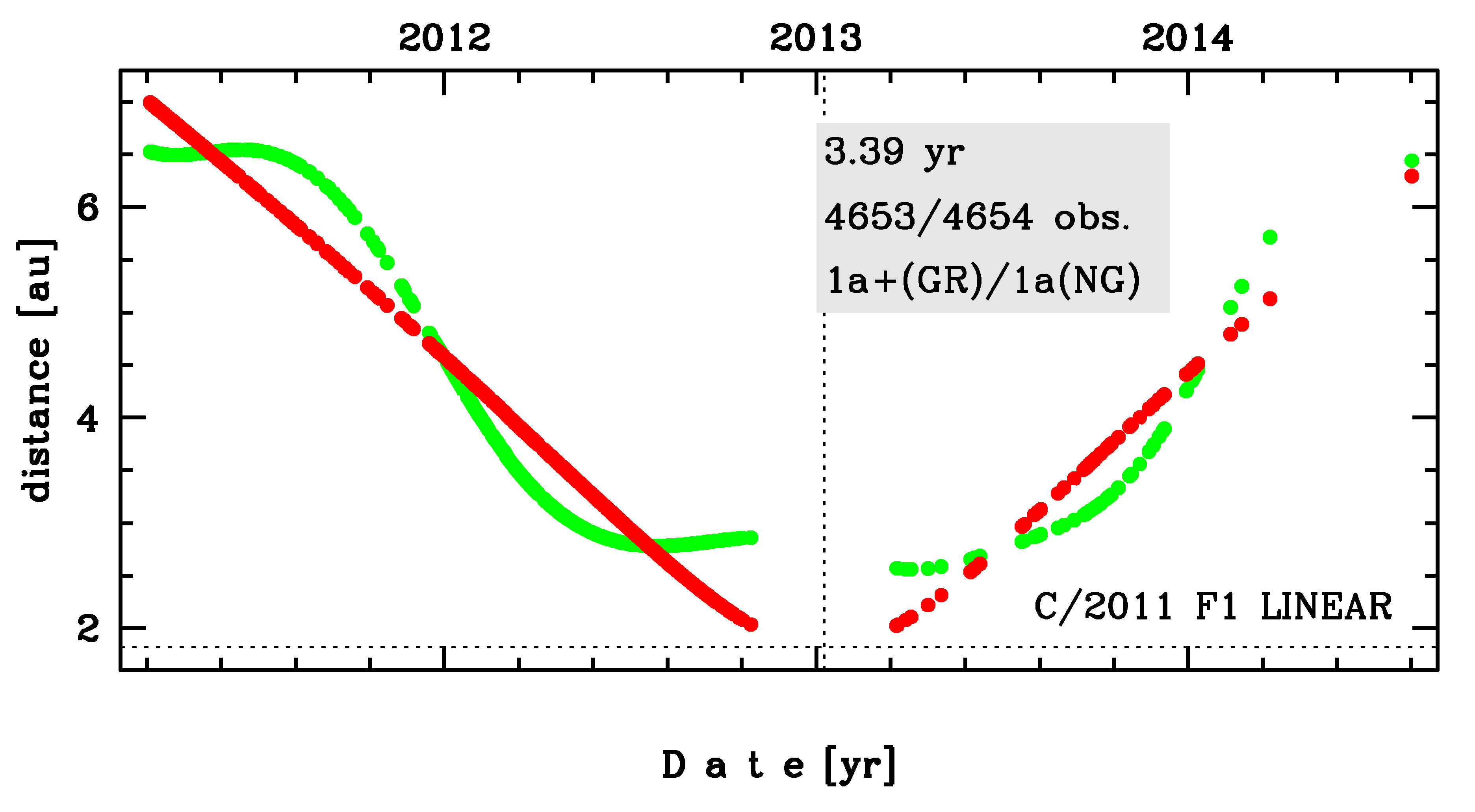C/2011 F1 LINEAR
more info
Comet C/2011 F1 was discovered on 17 March 2011 with Lincoln Laboratory Near-Earth Asteroid Research project; that is about a year and 10 months before its perihelion passage. The comet was observed until 7 August 2014.
Comet had its closest approach to the Earth on 6 April 2013 (2.560 au), about 3 months after its perihelion passage.
Solutions given here are based on data spanning over 3.39 yr in a range of heliocentric distances: 6.99 au – 1.819 au (perihelion) – 6.30 au.
This Oort spike comet suffers moderate planetary perturbations during its passage through the planetary system; these perturbations lead to a more tight future orbit (see future barycentric orbits).
See also Królikowska 2020.
Comet had its closest approach to the Earth on 6 April 2013 (2.560 au), about 3 months after its perihelion passage.
Solutions given here are based on data spanning over 3.39 yr in a range of heliocentric distances: 6.99 au – 1.819 au (perihelion) – 6.30 au.
This Oort spike comet suffers moderate planetary perturbations during its passage through the planetary system; these perturbations lead to a more tight future orbit (see future barycentric orbits).
See also Królikowska 2020.
| solution description | ||
|---|---|---|
| number of observations | 4653 | |
| data interval | 2011 03 17 – 2014 08 07 | |
| data type | perihelion within the observation arc (FULL) | |
| data arc selection | entire data set (STD) | |
| range of heliocentric distances | 6.99 au – 1.82 au (perihelion) – 6.3 au | |
| detectability of NG effects in the comet's motion | comet with determinable NG~orbit | |
| type of model of motion | GR - gravitational orbit | |
| data weighting | YES | |
| number of residuals | 9257 | |
| RMS [arcseconds] | 0.47 | |
| orbit quality class | 1a+ | |
| orbital elements (heliocentric ecliptic J2000) | ||
|---|---|---|
| Epoch | 2013 01 28 | |
| perihelion date | 2013 01 08.01487223 | ± 0.00005881 |
| perihelion distance [au] | 1.81912689 | ± 0.00000063 |
| eccentricity | 1.00009379 | ± 0.00000054 |
| argument of perihelion [°] | 192.552690 | ± 0.000026 |
| ascending node [°] | 85.115053 | ± 0.000008 |
| inclination [°] | 56.612802 | ± 0.000002 |
| reciprocal semi-major axis [10-6 au-1] | -51.56 | ± 0.30 |
